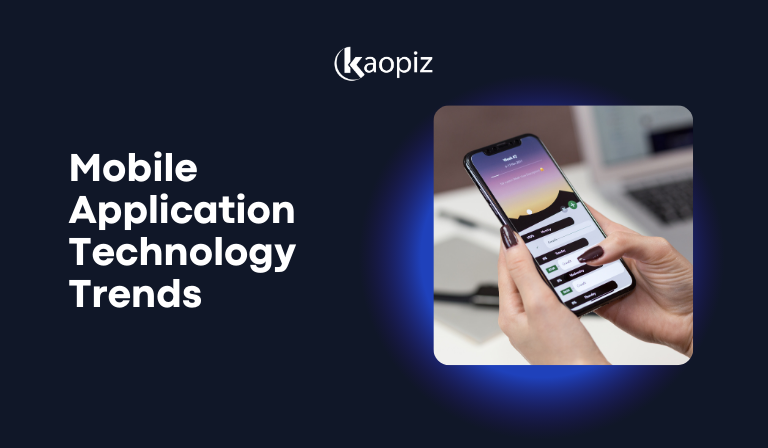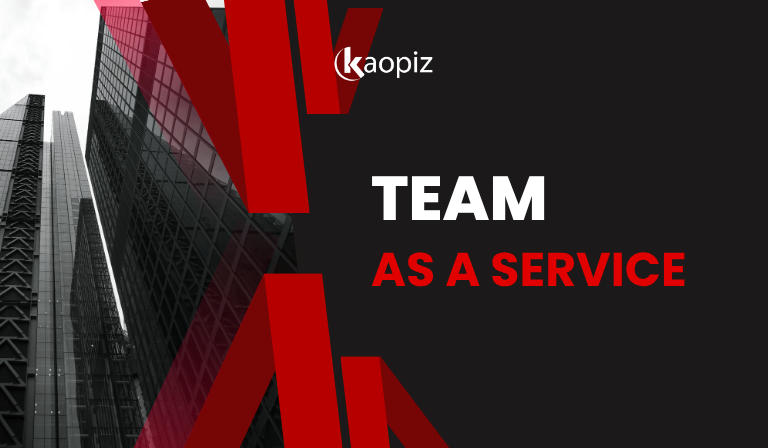Supply Chain Risk Management Software: A Complete Guide for Singapore Enterprises
Global supply chains are more complex than ever, and disruptions—from natural disasters to cyberattacks—can quickly impact business operations. For Singapore enterprises, operating in one of the world’s busiest trade hubs, managing these risks is no longer optional.
The global supply chain risk management software market is expected to grow significantly, rising from $6.71 billion in 2024 to $56.1 billion by 2035. Supply chain risk management software (SCRM) helps companies detect threats early, forecast disruptions, and maintain business continuity.
In this guide, we look at why SCRM matters for Singapore businesses in 2025, the key features to consider, and how to choose the right solution for long-term resilience.
Table of Contents
- What Is Supply Chain Risk Management Software (SCRM)?
- Why Supply Chain Risk Management Matters for Singapore Businesses in 2025
- Key Features to Look for in SCRM Software
- Risk Identification & Assessment: Early Detection of Potential Disruptions
- Predictive Analytics & Machine Learning: Forecasting Future Risks
- Supplier Performance Tracking: Monitoring Vendor Reliability
- Integration Capabilities: ERP, Logistics Systems, AI-driven Optimization
- Custom Dashboards & Reporting: Tailored Insights for Decision-makers
- How AI and Predictive Analytics Transform SCRM
- Best Supply Chain Risk Management Software in 2025
- How to Choose the Right Software for Your Business
- Custom Software vs Off-the-Shelf Solutions
- Challenges Faced by Businesses in Singapore
- Why Singapore Businesses Should Consider Offshore Development
- How Kaopiz Helps Singapore Businesses with Supply Chain Risk Management Solutions
- Future Trends in Supply Chain Risk Management
- Conclusion
- FAQs
What Is Supply Chain Risk Management Software (SCRM)?
Supply chain risk management software is a digital solution designed to help businesses identify, assess, and mitigate risks across their supply chain operations. Instead of relying on manual processes or scattered data, SCRM software provides a centralized platform that delivers real-time visibility into potential disruptions—from supplier delays and logistics breakdowns to compliance issues and cyber threats.

At its core, SCRM software combines risk management tools, predictive analytics, and automation to monitor supplier performance, track global events, and forecast how these factors may affect business operations. By analyzing both internal and external data, companies can make proactive decisions that reduce downtime, cut costs, and protect customer trust.
Why Supply Chain Risk Management Matters for Singapore Businesses in 2025
Singapore’s position as a global trade hub brings both opportunities and risks. With supply chains stretching across continents, enterprises here face challenges that are more complex and unpredictable than ever. Disruptions can quickly escalate into financial loss, compliance issues, and reputational damage.
Here’s why risk management in global supply chain is critical in 2025:
- High dependency on global suppliers – Any disruption in shipping lanes, raw material availability, or overseas regulations can directly impact operations.
- Geopolitical and economic uncertainty – Trade tensions, sanctions, and inflation increase costs and risks for import-dependent businesses.
- ESG and compliance requirements – Companies must adhere to sustainability and transparency standards to remain competitive.
- Cybersecurity threats – Digitalization of supply chains brings risks of data breaches, ransomware, and system downtime.
- Customer expectations – Delays or disruptions quickly translate into lost trust in an increasingly competitive market.
By leveraging supply chain risk software, Singapore enterprises can move from reactive firefighting to proactive risk prevention—using real-time monitoring, AI-driven analytics, and predictive modeling to build resilient supply chains.
Key Features to Look for in SCRM Software
Choosing the right supply chain risk management software can make the difference between reacting to crises and preventing them altogether. Below are the essential features Singapore enterprises should look for when evaluating tools and solutions.
Risk Identification & Assessment: Early Detection of Potential Disruptions
- SCRM software continuously scans internal and external data sources to identify risks before they escalate.
- Early detection allows businesses to respond proactively to supplier insolvencies, port delays, or natural disasters.
- This reduces downtime and safeguards revenue streams.
Predictive Analytics & Machine Learning: Forecasting Future Risks
- AI-powered algorithms analyze historical and real-time data to predict potential supply chain disruptions.
- Forecasting models can highlight risks such as demand surges, inventory shortages, or geopolitical instability.
- Singapore companies gain a competitive edge by preparing ahead of time.
Supplier Performance Tracking: Monitoring Vendor Reliability
- Software supply chain risk provides visibility into supplier performance, quality issues, and on-time delivery rates.
- Risk scoring and benchmarking help identify which vendors are dependable and which require contingency planning.
- This ensures stronger supplier relationships and long-term resilience.
Integration Capabilities: ERP, Logistics Systems, AI-Driven Optimization
- Modern software for supply chain risk management seamlessly integrates with ERP systems, warehouse management, logistics, and procurement platforms.
- Integration eliminates silos, creating a single source of truth for decision-makers.
- Advanced optimization tools help balance cost, risk, and efficiency across the supply chain.
Custom Dashboards & Reporting: Tailored Insights for Decision-Makers
- Executives, supply chain managers, and compliance teams each need different insights.
- Customizable dashboards allow stakeholders to focus on KPIs that matter most to their role.
- Automated reports support regulatory compliance, ESG tracking, and board-level decision-making.
How AI and Predictive Analytics Transform SCRM
Traditional supply chain risk management often relied on reactive approaches—responding to disruptions only after they occurred. In 2025, this is no longer enough. AI and predictive analytics are reshaping how enterprises manage supply chain risks, giving Singapore businesses the ability to anticipate challenges and act before they impact operations.

Keyways AI and predictive analytics are transforming supply chain risk management software:
- Real-Time Risk Monitoring – AI-powered systems scan global news, weather reports, social media, and supplier data to flag potential disruptions instantly.
- Predictive Forecasting – Machine learning models use historical and live data to forecast risks such as shipment delays, raw material shortages, or demand surges.
- Scenario Simulation – Businesses can model “what-if” scenarios to understand how different disruptions—like port congestion or supplier bankruptcy—would affect operations.
- Automated Decision-Making – AI tools recommend mitigation strategies, from rerouting shipments to activating backup suppliers, reducing human error and response time.
- Cost and Performance Optimization – Predictive analytics helps balance risk with cost efficiency, ensuring businesses are not only resilient but also competitive.
For Singapore enterprises, where global trade is the backbone of business growth, AI-driven SCRM solutions provide the agility needed to thrive in uncertain times. Instead of being caught off guard by disruptions, companies can proactively safeguard supply chains and maintain customer trust.
Best Supply Chain Risk Management Software in 2025
When selecting SCRM software in 2025, businesses should aim for platforms that offer advanced analytics, wide integrations, and strong vendor support. Below are some of the leading solutions in the market—and what makes them stand out:
| Solution | Highlights / Strengths | Use Cases / Differentiators |
|---|---|---|
| Prewave | AI-driven supplier monitoring, Tier-N supply chain visibility, real-time risk scoring | Good for enterprises needing deep visibility into 2nd/3rd tier suppliers. |
| Resilinc | Event-driven alerts, mapping of disruptions, supply chain “risk scores” | Useful for logistics-heavy firms that need real-time disruption alerts. |
| MetricStream SCRM | Comprehensive supplier risk & performance platform, integrated risk management | Strong in regulated industries and enterprises needing compliance & audit functions. |
| RapidRatings | Financial health prediction, supplier risk ratings based on financials | Helps detect supplier financial distress up to a year in advance. |
| Everstream Analytics | AI-powered global monitoring, network mapping, supply chain “digital twin” | Best for enterprises wanting full supply & logistics visibility. |
| Interos | Automated supplier resilience and mapping, multi-layer supply chain insights | Good for companies needing automated sub-tier risk visibility. |
| Riskonnect (Supplier / Vendor Risk) | Automates assessments, benchmarking, alerts, dashboards | Useful for businesses emphasizing third-party risk and vendor compliance. |
How to Choose the Right Software for Your Business
With so many supply chain risk management software options available in 2025, Singapore enterprises need a clear framework for selecting the right solution. The best choice depends on your industry, risk exposure, compliance needs, and growth strategy.
Here are the key factors to consider:
- Business Size & Complexity
- SMEs may benefit from cloud-based, cost-effective solutions with essential risk management tools.
- Large enterprises often require advanced platforms with global supply chain visibility, predictive analytics, and integration capabilities.
- Industry-Specific Risks
- Manufacturing companies may prioritize supplier performance monitoring.
- Financial services or healthcare firms may require stronger compliance and cybersecurity features.
- Integration with Existing Systems
- Ensure compatibility with ERP, logistics, and procurement platforms.
- Seamless integration prevents data silos and improves real-time decision-making.
- Scalability & Flexibility
- Choose software that can grow with your business—adding new modules, suppliers, or geographies without major disruptions.
- Ease of Use & Adoption
- A user-friendly interface and customizable dashboards improve adoption across teams.
- Training and support from the vendor are essential to maximize ROI.
- Vendor Reliability & Local Support
- Look for established supply chain risk management software vendors in Singapore or global providers with strong local partners.
- Evaluate their track record, SLAs, and ability to meet Singapore’s compliance standards (e.g., PDPA).
- Cost & Total Value
- Beyond licensing fees, consider integration, training, and long-term support costs.
- Weigh the investment against potential risk savings and operational resilience.
By carefully evaluating these factors, Singapore businesses can confidently select a supply chain risk management solution that aligns with both current needs and future growth.
Custom Software vs Off-the-Shelf Solutions
When adopting supply chain risk management software, Singapore businesses often face a key decision: purchase a ready-made solution or invest in a custom-built platform. Each option has distinct advantages and trade-offs.
| Criteria | Off-the-Shelf Solutions | Custom-Built Software |
|---|---|---|
| Implementation Speed | Quick deployment, minimal setup needed. | Longer development timeline before go-live. |
| Cost | Lower upfront costs but recurring license/subscription fees. | Higher initial investment, but better long-term ROI. |
| Flexibility | Limited customization—features may not fully match unique workflows. | Fully tailored to company’s specific risk profile and processes. |
| Integration | May face challenges connecting with legacy ERP/logistics systems. | Designed to integrate seamlessly with existing platforms. |
| Scalability | Restricted to vendor’s roadmap; may outgrow features over time. | Scales with business growth and regulatory changes. |
| Vendor Dependence | Reliant on external updates and vendor support cycles. | Built and maintained by chosen development partner. |
| Best For | SMEs or businesses seeking quick, cost-effective adoption. | Enterprises with complex supply chains, high compliance needs, or long-term scalability goals. |
Challenges Faced by Businesses in Singapore
As one of the world’s busiest trade and logistics hubs, Singapore offers businesses unmatched connectivity—but this also exposes them to a wide range of risks. Local enterprises face unique challenges that make supply chain risk management software essential for long-term resilience.
Key Challenges:
- Heavy Dependence on Global Trade: With most raw materials and goods imported, disruptions in overseas markets, shipping routes, or ports have immediate consequences for Singapore businesses.
- Geopolitical and Economic Volatility: Ongoing trade tensions, currency fluctuations, and inflationary pressures increase supply chain unpredictability.
- Regulatory and ESG Compliance: Stricter reporting requirements around sustainability, carbon tracking, and data privacy (e.g., PDPA) add complexity to operations.
- Cybersecurity Risks: As supply chains become more digitized, vulnerabilities to ransomware, phishing, and supplier-side cyberattacks rise sharply.
- High Operational Costs: Rising manpower costs and expensive logistics make efficiency and proactive risk mitigation even more critical in Singapore’s competitive landscape.
- Limited In-House IT Expertise: Many companies lack internal resources to build or maintain advanced supply chain risk management tools for analysis, pushing demand for trusted IT firms and outsourcing companies in Singapore.
Why Singapore Businesses Should Consider Offshore Development
While Singapore is a global innovation hub, many enterprises face high labor costs and a limited pool of specialized IT talent. This makes it challenging for companies to develop or maintain complex solutions like supply chain risk management software in-house. Partnering with an offshore software development company in Singapore offers an efficient, scalable alternative.

Key Benefits of Offshore Development:
- Cost Efficiency: Offshore partners—especially in nearby countries like Vietnam or India—offer highly skilled developers at a fraction of Singapore’s labor costs.
- Access to a Wider Talent Pool: Offshore vendors provide access to specialists in AI, predictive analytics, cloud computing, and cybersecurity—skills essential for advanced supply chain risk management tools.
- Faster Time-to-Market: Offshore teams can scale up quickly, accelerating the design, development, and deployment of SCRM solutions. This agility helps Singapore companies respond to evolving supply chain challenges faster.
- Focus on Core Business: By outsourcing software development, enterprises can focus internal resources on operations, logistics, and customer service while leaving technical complexity to experts.
- Flexible Engagement Models: Offshore IT firms offer project-based, staff augmentation, or dedicated team models, making it easy to adapt to changing needs.
How Kaopiz Helps Singapore Businesses with Supply Chain Risk Management Solutions
With over a decade of experience and a track record of delivering 1,000+ successful projects for more than 200 global clients, Kaopiz knows how quickly supply chain disruptions can turn into costly challenges for Singapore enterprises. That’s why we deliver tailored supply chain risk management solutions, leveraging our expertise in AI, cloud, and custom software development—backed by deep industry insight.
Our Approach
- Custom-Built SCRM Platforms
- We design and develop software specifically aligned with each client’s risk profile, industry requirements, and existing systems.
- Features include supplier risk scoring, predictive analytics, and real-time dashboards for decision-makers.
- Seamless Integration with Enterprise Systems
- Kaopiz ensures smooth integration of SCRM tools with ERP, logistics, procurement, and finance systems—removing silos and improving data visibility.
- AI and Predictive Analytics
- Using machine learning models, we help clients forecast potential disruptions, simulate risk scenarios, and make proactive supply chain decisions.
- Scalable Offshore Development Model
- With over 600 experienced engineers across Vietnam and Singapore, Kaopiz offers cost-efficient, flexible development teams that can scale quickly.
- Engagement models include dedicated teams, staff augmentation, and full project outsourcing.
- Ongoing Support & Maintenance
- Beyond deployment, we provide continuous monitoring, updates, and system enhancements to ensure long-term resilience.
Why Partner with Kaopiz?
- Proven track record in custom enterprise software for logistics, manufacturing, and retail.
- Recognized as an AWS Advanced Consulting Partner and ISTQB Platinum Partner.
- Local presence in Singapore with offshore execution in Vietnam—combining accessibility with cost efficiency.
- Trusted by enterprises across Japan, Singapore, and global markets with a 98% satisfaction rate.
By partnering with Kaopiz, Singapore businesses gain more than just software—they gain a long-term technology partner dedicated to building smarter, more resilient, and future-ready supply chains.
Future Trends in Supply Chain Risk Management
As global supply chains become more complex, businesses in Singapore must look beyond current challenges and prepare for the future. Emerging technologies and shifting market conditions are reshaping how companies approach supply chain risk management.

Here are the key trends to watch in 2025 and beyond:
- AI-Driven Predictive Risk Modeling: AI will continue to enhance predictive analytics, allowing businesses to anticipate disruptions with greater accuracy and automate proactive responses.
- Agentic AI & Autonomous Risk Monitoring: Next-generation AI agents will independently track suppliers, monitor global events, and recommend mitigation strategies—reducing reliance on manual oversight.
- Blockchain for Transparency & Trust: Blockchain technology will improve traceability across supply chains, helping companies validate supplier compliance, ensure ethical sourcing, and reduce fraud.
- Cloud-Native SCRM Platforms: Cloud-based solutions will dominate, offering real-time data visibility, flexible scaling, and seamless integration across ERP, logistics, and procurement systems.
- Stronger ESG & Compliance Requirements: Sustainability reporting, carbon tracking, and regulatory compliance will drive companies to adopt SCRM tools with built-in ESG monitoring and reporting features.
- Scenario Simulation & Digital Twins: Digital twin technology will allow enterprises to model “what-if” disruption scenarios, helping leaders test strategies before implementing them in the real world.
- Collaborative Supply Chain Ecosystems: Companies will increasingly share risk data with suppliers and partners, creating connected networks that strengthen resilience across the value chain.
Conclusion
In today’s global trade environment, Singapore enterprises can’t afford to ignore supply chain risks. Disruptions from suppliers, compliance issues, or cyber threats can quickly become costly setbacks.
Adopting supply chain risk management software enables businesses to predict, prepare, and respond proactively, building more resilient and future-ready operations. Whether through off-the-shelf tools or custom-built solutions with a trusted IT outsourcing company like Kaopiz, the goal is clear: safeguard your supply chain, protect your reputation, and secure long-term growth.
FAQs
- What Is the Best Supply Chain Risk Management Software for Singapore Enterprises?
- The best solution depends on your business size, industry, and compliance needs. Global providers such as SAP Ariba, Resilinc, and Interos offer powerful features like predictive analytics and supplier monitoring. However, some Singapore enterprises may benefit more from custom-built solutions that align with their specific workflows and regulatory requirements.
- When Should a Company Build Custom SCRM Instead of Using Off-the-Shelf Software?
- Custom SCRM software is ideal for businesses with complex global supply chains, strict compliance requirements, or unique processes that off-the-shelf tools cannot fully cover. While ready-made solutions are faster to deploy, custom platforms provide better integration with ERP, logistics, and finance systems, delivering stronger long-term ROI.
- Should I Hire a Local or Offshore Vendor for My SCRM Software Project?
- Both options have advantages. Local supply chain risk management solution providers in Singapore provide closer collaboration, faster support, and stronger knowledge of local regulations. Offshore vendors offer cost efficiency, larger talent pools, and the flexibility to scale development teams quickly. Many enterprises adopt a hybrid model—working with a trusted local partner who manages offshore teams for the best of both worlds.




















